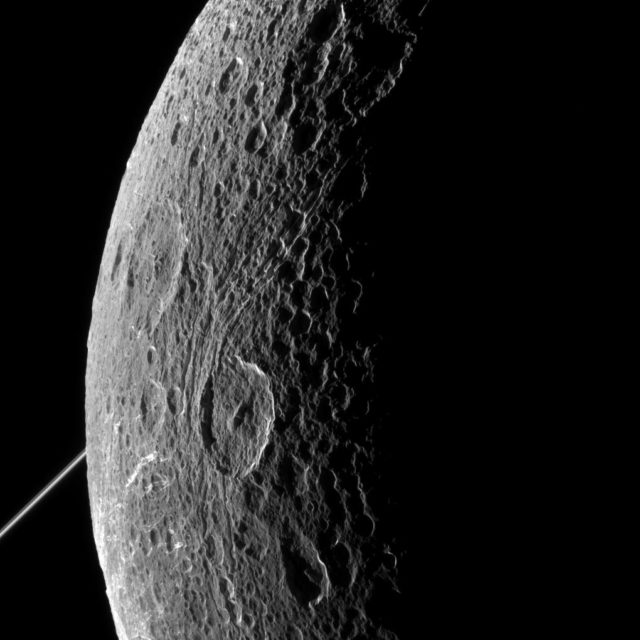
By IAN O’NEILL, Discovery News, June 19, 2015 – On Tuesday (June 16), NASA’s Cassini mission had an EXTREMELY close encounter with one of Saturn’s cratered moons, Dione.
At a distance of only 321 miles (516 kilometers), this close approach was Cassini’s fourth flyby of its mission — but it wasn’t the closest. During the spacecraft’s third flyby on Dec. 12, 2011, Cassini swooped only 62 miles (99 kilometers) from the moon’s cratered surface.
PHOTO: Cassini Gets Final, Stunning View of Saturn’s Moon Hyperion
This image, captured by Cassini’s narrow-angle camera, was photographed when the mission was 48,000 miles (77,000 kilometers) away and the plane of Saturn’s rings can be seen in the background.
This is the penultimate flyby of Dione before Cassini’s mission enters its final stage.
Preparations have begun to swing the spacecraft out of Saturn’s ring plane and into a polar orbit — it will then be commanded to begin orbiting though Saturn’s rings, giving scientists an unprecedented look at the gas giant’s ring environment.
But the best is yet to come; the next moon after Dione on Cassini’s checklist is mysterious Enceladus, where the probe will make a breathtakingly-close pass of only 30 miles (48 kilometers) from the icy moon’s surface. Enceladus is now known to hide a liquid ocean under its icy crust and, through a system of polar geysers the moon is venting salty water vapor into space and mission scientists hope to use this close pass to further study the composition of this vapor.












